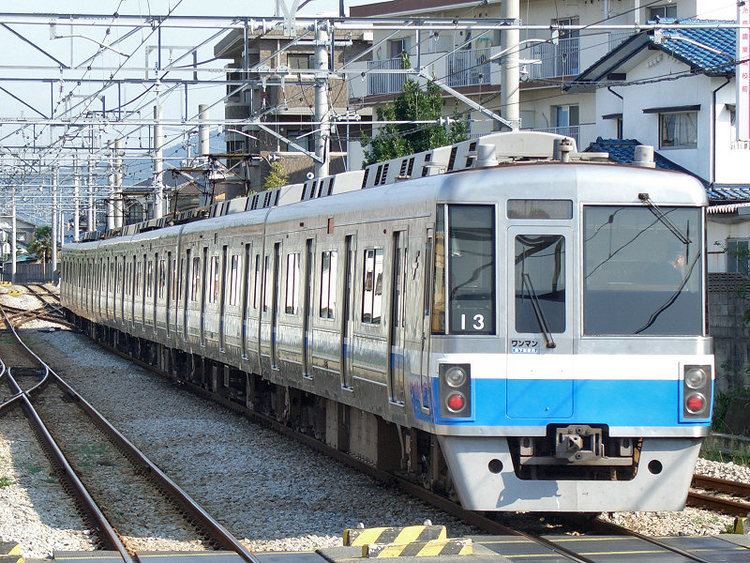In service 1981–Present Refurbishment 1997–2004 | Constructed 1981–1986 | |
 | ||
Number built 108 vehicles (18 trainsets) Number in service 108 vehicles (18 trainsets) | ||
The Fukuoka Subway 1000 series (福岡市交通局1000系) is an electric multiple unit (EMU) train type operated by the Fukuoka City Transportation Bureau on the Hakozaki Line and Kūkō Line in Fukuoka, Japan. The trains also inter-run to/from the Chikuhi Line, operated by Kyushu Railway Company (JR Kyushu).
Contents
Design
Because the train line runs near the coast, car bodies were constructed of a stainless steel skin on a conventional steel frame for corrosion resistance. The car bodies are unpainted with blue and white stripes representing the Genkai Sea. Each car is 20 m long with four pairs of doors per side. Early trainsets had opening windows, but these were subsequently replaced with sealed windows. The trains have emergency exit doors at the ends. The doors and window wipers were added after refurbishment.
Formation
As of 1 April 2014, the fleet consists of 18 six-car sets formed as follows, with four motored ("M") cars and two non-powered driving trailer ("Tc") cars.
Cars 3 and 5 are each fitted with two cross-arm type pantographs.
Interior
The longitudinal seats are covered with a red moquette and some parts of the saloons feature woodgrain panelling. In 1982, wheelchair spaces were added to the cars. All trains are air-conditioned.
History
The 1000 series entered service on the Fukuoka City Subway coinciding with its opening on July 26, 1981. In 1982 it received the 22nd "Laurel Award" which is granted by a committee for excellent design.
The first eight trains were manufactured by Kinki Sharyo in 1981. To cope with operations on the Chikuhi Line, seven more trains were built by Kawasaki Heavy Industries in 1982. Three more sets were built by Nippon Sharyo (1984), Tokyu Car Corporation (1985), and Hitachi (1986). The fleet consists of a total of 18 trainsets (108 cars).
Driver-only operation commenced on January 20, 1984 using automatic train control (ATC), and the cabs are equipped with a master controller, brake handle, and automatic train stop (ATS) system for manual operation.
Refurbishment
Between 1997 and 2004, 15 years after the first trains were built and after the introduction of the 2000 series, the trains underwent refurbishment. After refurbishment, the trains were called 1000N series. Refurbishment included the following major modifications.
In 2000, Hitachi manufactured a three-level Insulated-gate bipolar transistor (IGBT) traction inverter for the trains, and in 2001 it was changed into a full-electric brake with a two-level IGBT.
